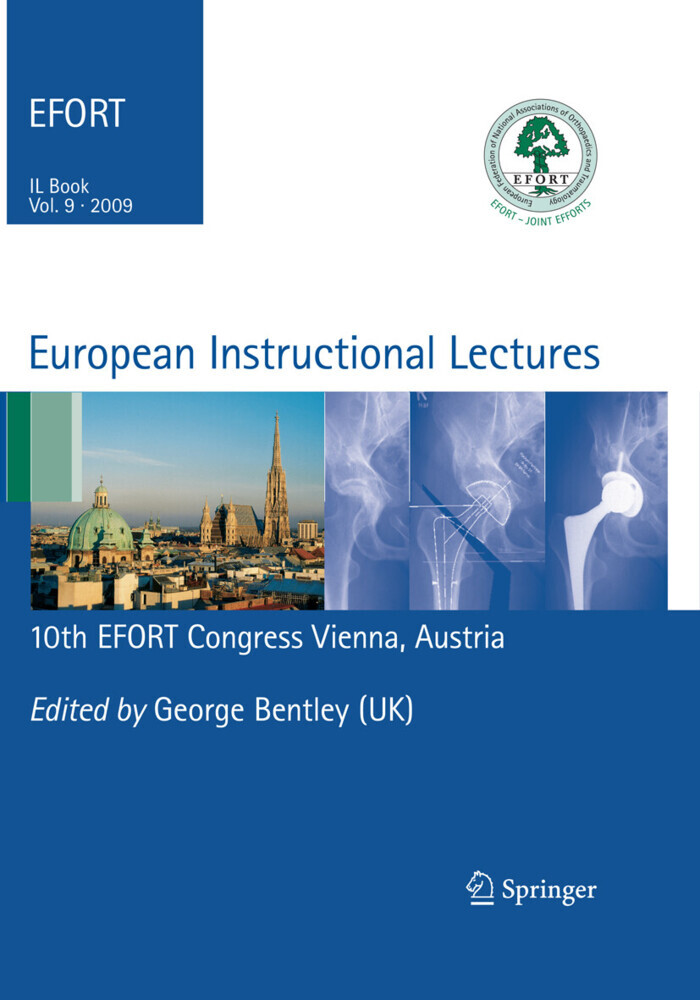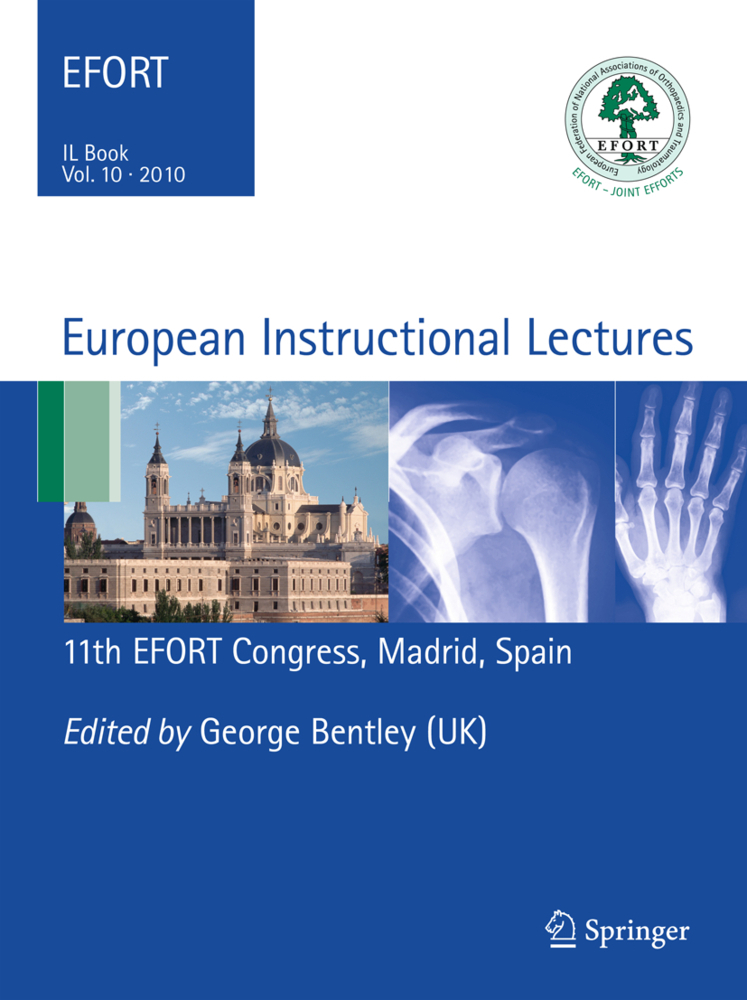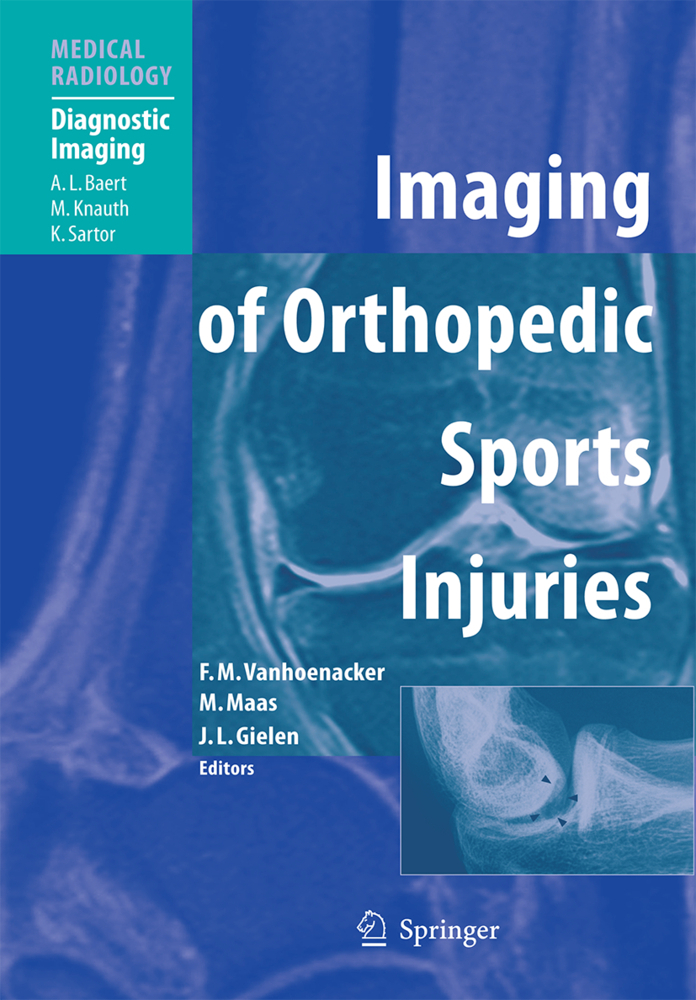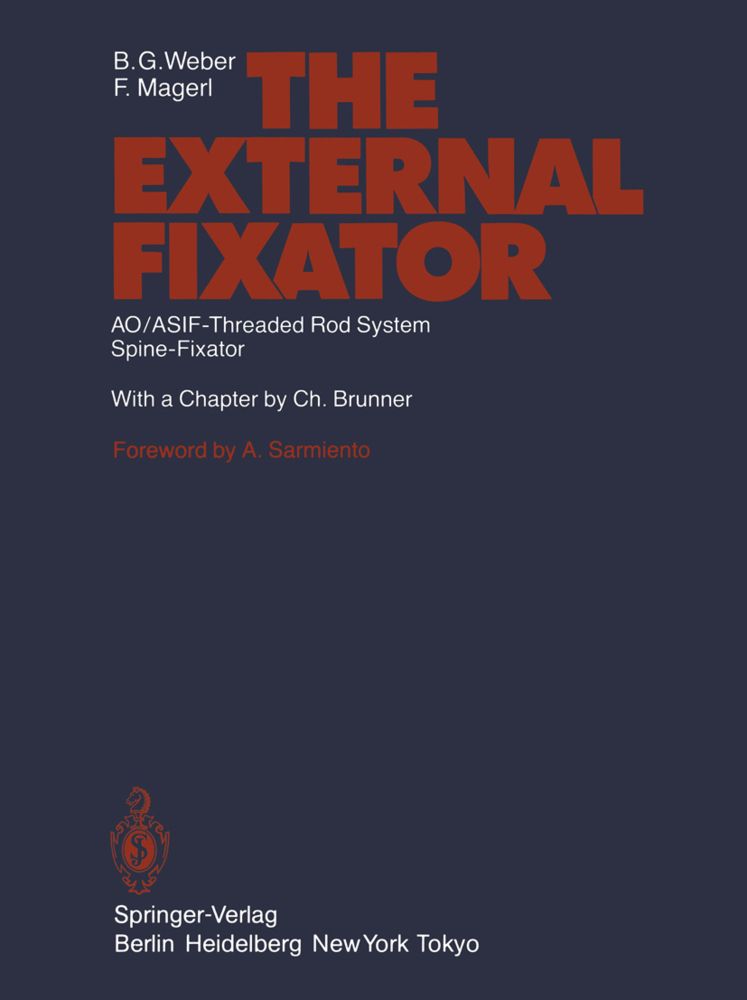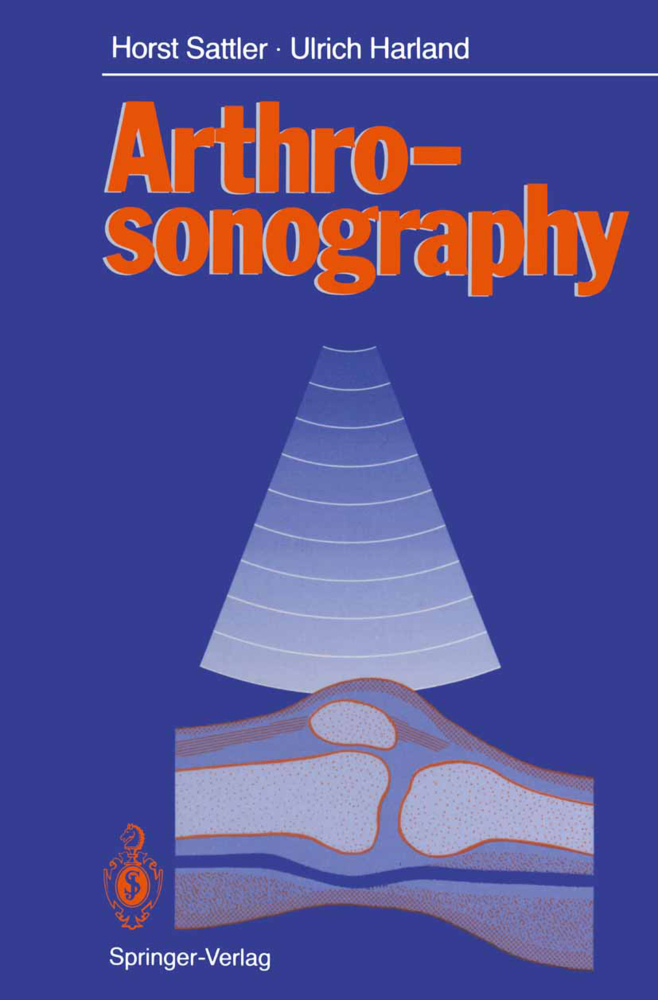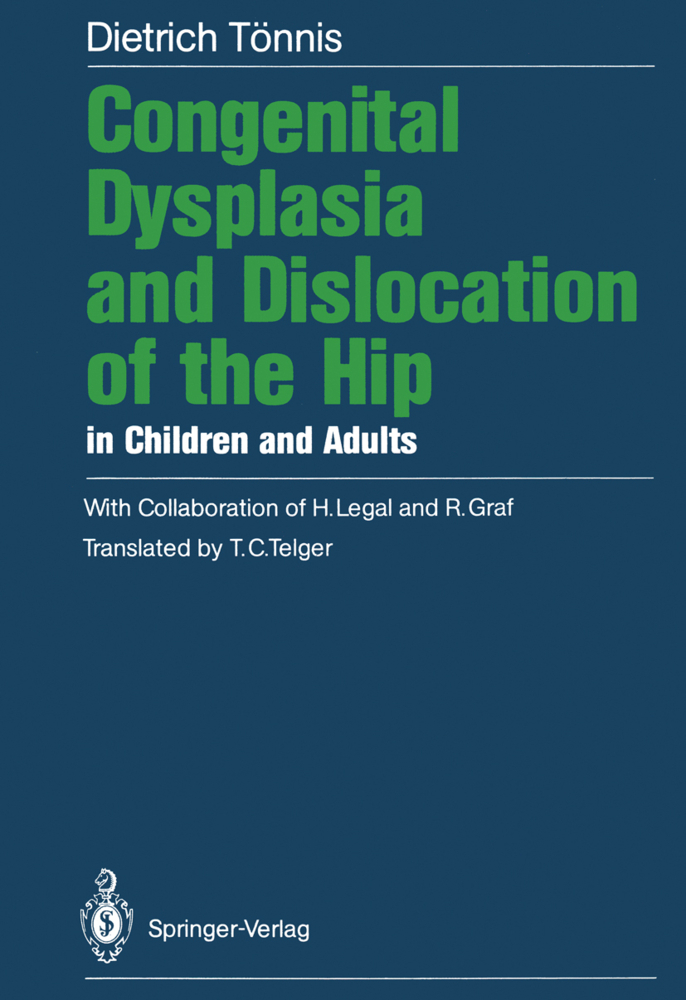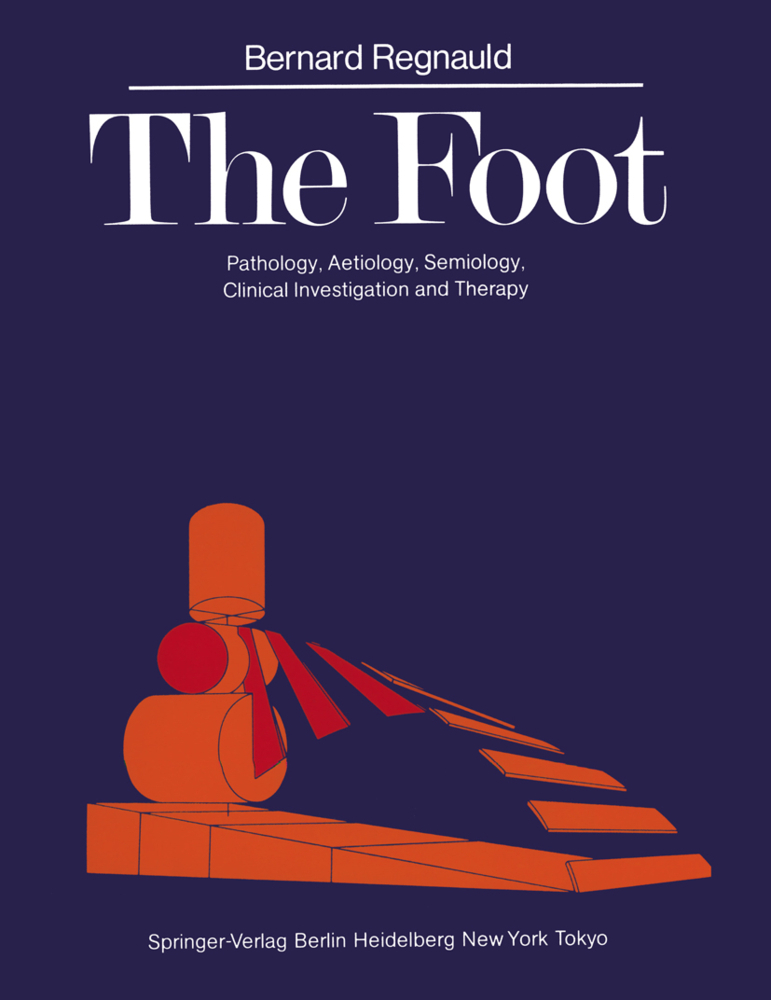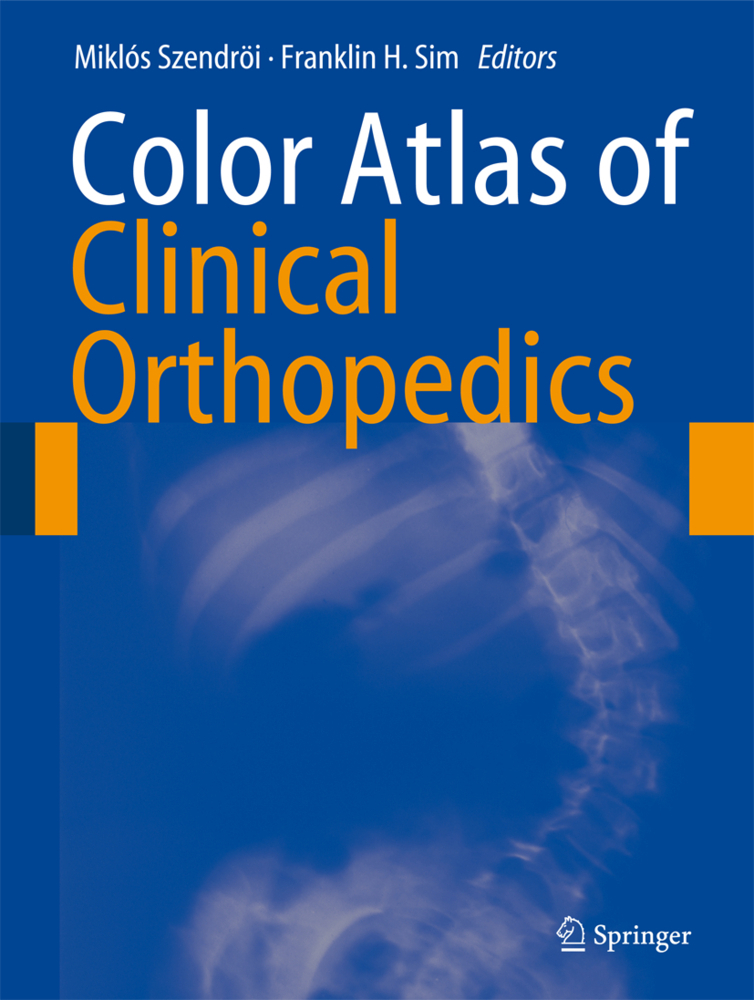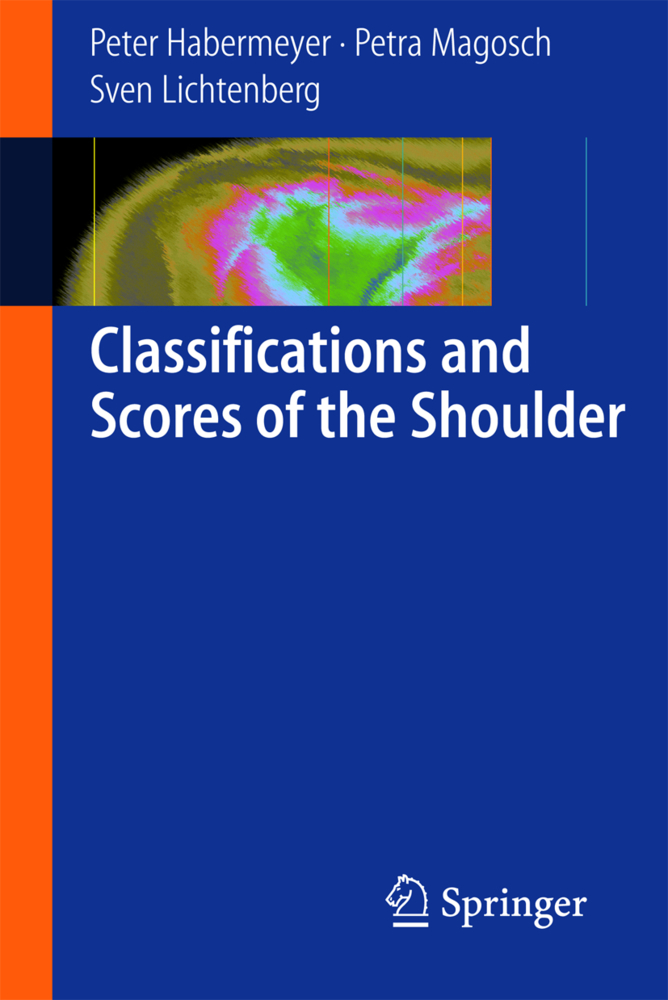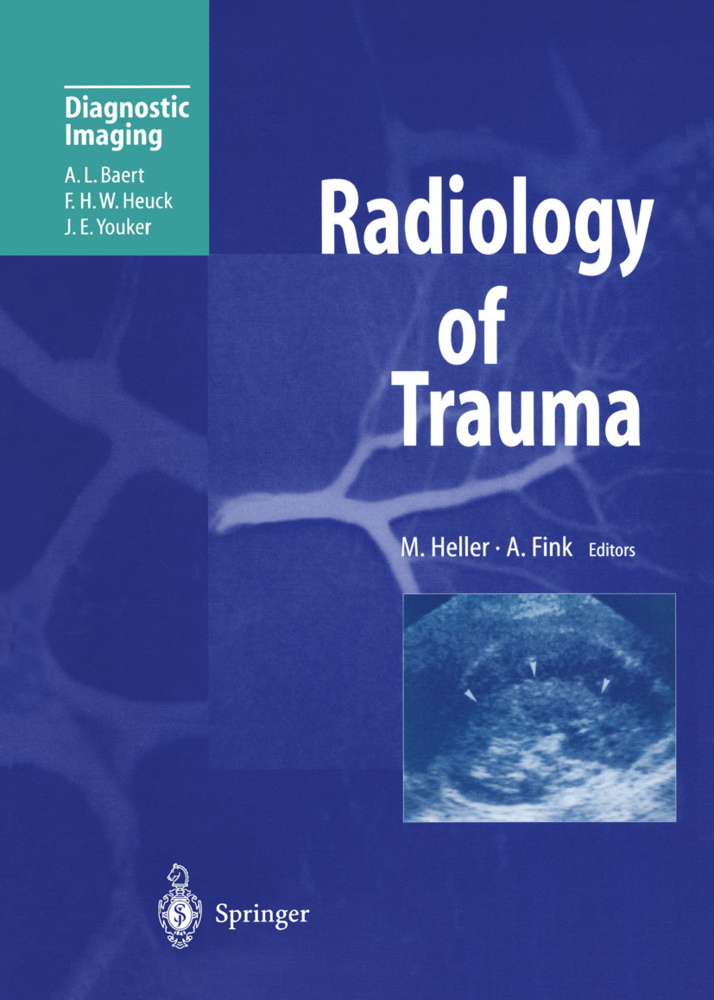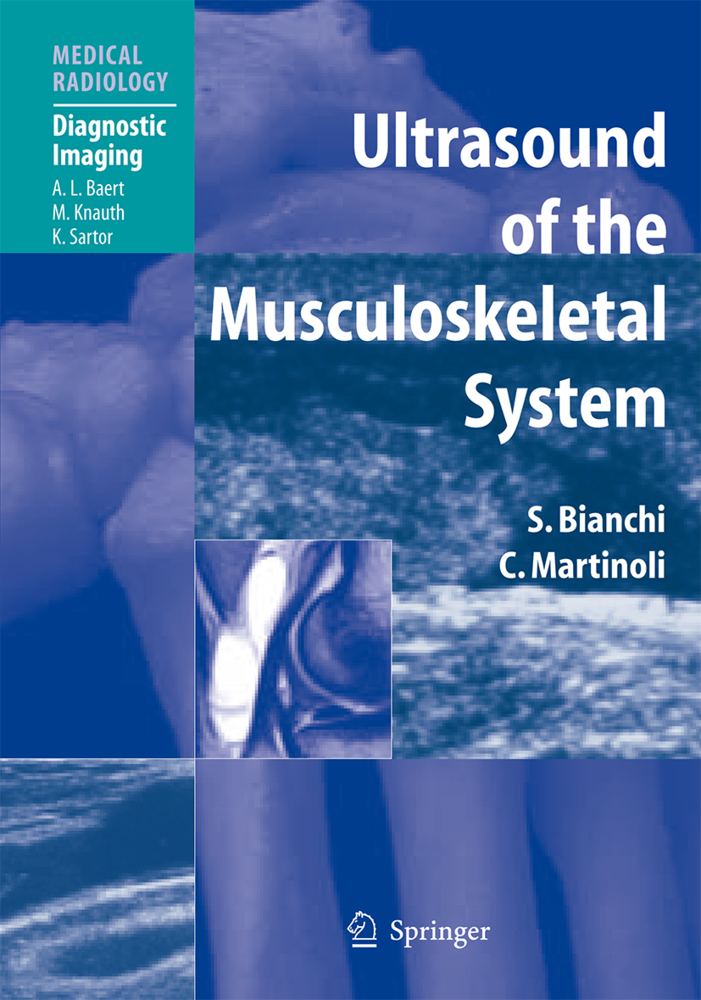European Instructional Lectures. Vol.9
Volume 9, 2009; 10th EFORT Congress, Vienna, Austria
The 10th Congress of the European Federation of National Associations of Ort- paedics and Traumatology (EFORT) is the most important combined congress of the national societies in Europe. At present a total of 36 societies are members of this organisation. The major goal of EFORT is to bring current knowledge of diseases and trauma of the musculoskeletal system to all European surgeons and additionally to welcome colleagues from all over the world to join us in sharing our daily work experience. In the scienti? c programme the instructional lectures form a very basic and imp- tant part of the Congress. In Vienna a total of 25 sessions are included in the p- gramme. The authors come from all over Europe and they discuss topics from many different ? elds of trauma and orthopaedics. These lectures not only give the oppor- nity for us to be informed about various diseases, but they are also in? uenced by the authors' experience based on the treatment philosophy in their own country - again an opportunity to widen the European horizon. They are aimed at both the general orthopaedic surgeons and the young residents and trainees who want to widen their knowledge in different topics of orthopaedic and trauma surgery. As the chairman of the Local Organising Committee I thank all the authors for providing their presentation for publication in this volume. I also address my special thanks to Professor George Bentley for organising this edition.
1;Foreword;6 2;Preface;7 3;Contents;8 4;Contributors;10 5;Part I General Orthopaedics;13 5.1;Current Status of Arthroplasty Registers in Europe;14 5.1.1;Introduction;14 5.1.2;Historical Review and Methods;14 5.1.3;Basic Requirements for the Development and Activities of a National Arthroplasty Register;15 5.1.4;Registers in Orthopaedics;17 5.1.5;Basic Principles in Interpreting Register Data of Other Countries;17 5.1.6;Benefits the Individual Surgeon Can Derive from Registers;18 5.1.7;Discussion;19 5.1.8;Acknowledgements;20 5.1.9;References;20 5.2;National Registration of Hip Fractures in Sweden;22 5.2.1;Development of the National Registration RIKSHÖFT;22 5.2.2;Hip Fracture Demographics;23 5.2.3;National Data 2007;23 5.2.4;Motivation;28 5.2.5;Performance;28 5.2.6;Computing and Feed Back;28 5.2.7;Funding;28 5.2.8;References;28 5.3;Current Status of Articular Cartilage Repair;30 5.3.1;Introduction;30 5.3.2;Arthroscopic Debridement;30 5.3.3;Reparative Techniques;31 5.3.4;Restorative Techniques;31 5.3.5;Treatment Selection;33 5.3.6;Future Developments;34 5.3.7;Conclusions;34 5.3.8;References;35 5.4;Thromboprophylaxis After Major Orthopaedic Surgery: State of the Art;39 5.4.1;Introduction;39 5.4.2;Venous Thromboembolism After Major Orthopaedic Surgery;39 5.4.3;Guideline Recommendations;40 5.4.4;Current Options for Thromboprophylaxis;40 5.4.5;New Developments in Prophylaxis: Targeted Anticoagulants;41 5.4.6;References;45 6;Part II Paediatrics;49 6.1;DDH: Diagnosis and Treatment Strategies;50 6.1.1;Introduction;50 6.1.2;Method;50 6.1.3;Results;52 6.1.4;Conclusion and Recommendation;54 6.1.5;Acknowledgments;55 6.1.6;References;55 6.2;Slipped Capital Femoral Epiphysis;56 6.2.1;Introduction;56 6.2.2;Classi. cation;56 6.2.3;Clinical Signs and Symptoms;57 6.2.4;Complications;61 6.2.5;After-Treatment;62 6.2.6;Prognosis;62 6.2.7;Summary;65 6.2.8;References;66 6.3;Major Joint Contractures in Children;70 6.3.1;Make the Diagnosis;70 6.3.2;Planning Treatment;71 6.3.3;Physiotherapy;71 6.3.4;Splints and Orthotics;71 6.3.5;Tone-Reducing Medication;72 6.3.6;Soft Tissue Releases;72 6.3.7;Correction of Limb Alignment;72 6.3.8;Arthrodesis;73 6.3.9;Arthroplasty;73 6.3.10;Decision Making;73 7;Part III Trauma;74 7.1;Damage-Control Orthopaedic Surgery in Polytrauma: In. uence on the Clinical Course and Its Pathogenetic Background;75 7.1.1;Decision Making for the Treatment of Major Fractures: Evidence for the Bene. ts of Tapered Treatment Evidence for the Bene. ts of Tapered Treatment;75 7.1.2;Pathogenesis of Organ Failure Following Trauma Induced by Multiple Fractures, Soft-Tissue Damage and Acute Haemorrhage;77 7.1.3;Interaction Between Acute Surgery After Trauma and the Pathophysiological Responses Induced by Trauma;78 7.1.4;Factors for Grading Patient Assessment;79 7.1.5;Summary;80 7.1.6;References;81 7.2;Fractures and Non-Unions of the Clavicle;83 7.2.1;Surgical Anatomy and Classi. cation;83 7.2.2;Up-Date on Conservative Treatment for Mid-Clavicular Fractures;84 7.2.3;Modalities of Plate Fixation of Mid-Clavicular Fractures;85 7.2.4;Intra-Medullary Fixation;85 7.2.5;Results of Operative Treatment;85 7.2.6;Indications for Surgery in Mid-Clavicular Fractures;85 7.2.7;Mal-Union of Midshaft Clavicle Fractures;86 7.2.8;Non-Union of Mid-Clavicle Fractures;86 7.2.9;Fractures of the Lateral Third of the Clavicule;86 7.2.10;Conclusions;87 7.2.11;References;87 7.3;Proximal Humeral Fractures;89 7.3.1;Introduction;89 7.3.2;Epidemiology;89 7.3.3;Imaging Studies;89 7.3.4;Classi. cations Systems;91 7.3.5;Current Trends of Treatment;92 7.3.6;Conclusions;95 7.3.7;References;96 7.4;Fixation of Intertrochanteric Femoral Fractures;98 7.4.1;Introduction;98 7.4.2;Treatment Methods;98 7.4.3;Discussion;99 7.4.4;Conclusions;102 7.4.5;References;102 7.5;Surgical Management of Distal Tibial Fractures in Adults;104 7.5.1;Introduction;104 7.5.2;Classification;104 7.5.3;Soft Tissue Injuries;106 7.5.4;Initial Management;107 7.5.5;De. nitive Management;108 7.5.6;Surgical Techniques
Bentley, George
| ISBN | 9783642009662 |
|---|---|
| Artikelnummer | 9783642009662 |
| Medientyp | E-Book - PDF |
| Auflage | 2. Aufl. |
| Copyrightjahr | 2009 |
| Verlag | Springer-Verlag |
| Umfang | 246 Seiten |
| Sprache | Englisch |
| Kopierschutz | Digitales Wasserzeichen |

